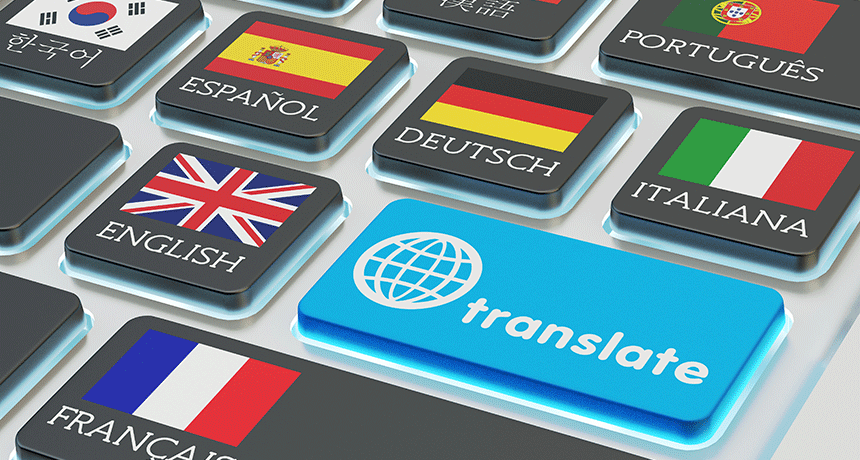 Ecommerce has become a popular way to reach potential customers all over the world. You no longer need to expand through a chain of brick and mortar stores that stretches halfway across the world. From behind a computer, you can reach customers using the latest business technology. However, you still need to make sure your international eCommerce venture connects with local audiences properly, by localizing your website. Below we’ll go into which technology you can use yourself and which part of the process will still need website translation services from a translation agency.
Ecommerce has become a popular way to reach potential customers all over the world. You no longer need to expand through a chain of brick and mortar stores that stretches halfway across the world. From behind a computer, you can reach customers using the latest business technology. However, you still need to make sure your international eCommerce venture connects with local audiences properly, by localizing your website. Below we’ll go into which technology you can use yourself and which part of the process will still need website translation services from a translation agency.
How to Update Your International Ecommerce Site with Top Tech
Managing a website is getting easier and easier as business technology delivers everything from customizable plug-ins to ready-to-go templates. Translating an eCommerce website using business technology is no different. A few common types of tech that can help you translate that website include:
- Web proxies: These help you launch your web app in one or more additional languages. Often, these do not need direct developer involvement.
- Integrations: You can also manage your website through common applications. These often connect you right to a developer’s tech stack.
- APIs: This helps localization software to customize your experience, often operating as hundreds of API endpoints.
Some of these might seem confusing to use off the bat, but the companies you buy the software from can help with instructions for implementation and use.
These days, eCommerce companies can also choose to run their multilingual websites in various ways. The original way was to run parallel sites and microsites, where the translated sites would run interdependently and need to be updated manually. Now, content management systems can work with multilingual functionality to manage the same website from one backend. The most sophisticated level of managing a multilingual website is a proxy-based solution. This is a type of technology involving APIs and different interfaces. It can apply a translation to a wide variety of content, from web copy to marketing emails to apps.
The Case for Professional Website Translation
Ecommerce translation tech can make the whole idea seem easy. However, there are several parts of the process that software simply can’t deliver on its own. These parts have to do with localization. Ofer Tirosh, CEO of translation agency Tomedes, advises that website translation services can help with localization. It can be delivered as part of a comprehensive service that looks at the language conversion process from all angles.
When it comes to international eCommerce, online customer bases are truly global. However, 60% of consumers rarely or never buy from English-only websites. That means that by not using website translation services, you are automatically ruling out selling your goods to 60% of consumers.
Further research shows that 55% of consumers want to buy products in their native language only, proving how important localization is. Localization is the process that makes sure the website integrates fully into the new culture(s) and customer base(s).
From a layout standpoint, localization can ensure a website looks appropriate no matter which language it is in or which direction that language flows in. Localization can also update values that software might have missed, like currency symbols.
Making sure that the message stays culturally sensitive and meets local consumer habits is another important part of localization. For instance, certain products might be called different things in different regions, so it might be necessary to update that terminology so that the products pop up under search terms more easily.
Localization can also make sure that an international eCommerce website is meeting local regulations or common standards, such as privacy laws or cookie notifications.
Another major role that localization handles is updating graphics to fit in with the local culture. Graphical elements themselves might have to be updated to fit the new language, especially as part of logos. Certain ads or photo elements might have to be re-shot to include models that fit the local demographics.
Website translation software has come a long way in helping run a multilingual enterprise, but localization still covers many parts of the process that software can’t.
Our Website Translation Services the Best Choice for Your Ecommerce Site?
What is the best online translation service? And is it right for your site? You can find the best service to suit your needs by looking online under search terms like website translation services or local terms like translation agency UK. You might also ask around your professional network for recommendations.
When looking for the best website translation services, it’s important to check out their background. Start by making sure the website localization services have experience handling eCommerce sites. Ask to see samples of their work, preferably live sites.
Prepare multiple questions to assess what they know about the topic. Ask about their process for translating an eCommerce site. You might ask, for example: How much does it cost to translate a website? Translation services commonly run at around £0.10 to £0.16 per word.


